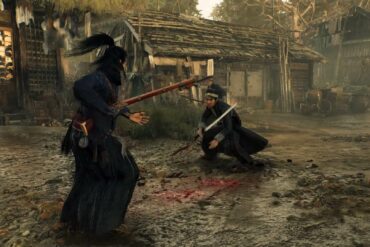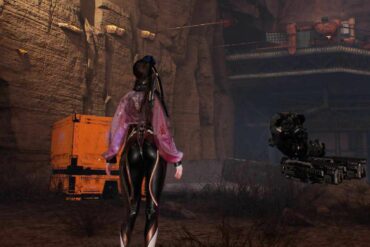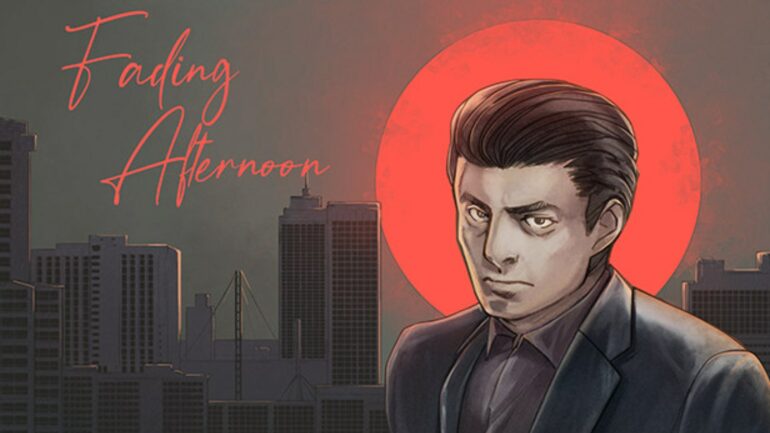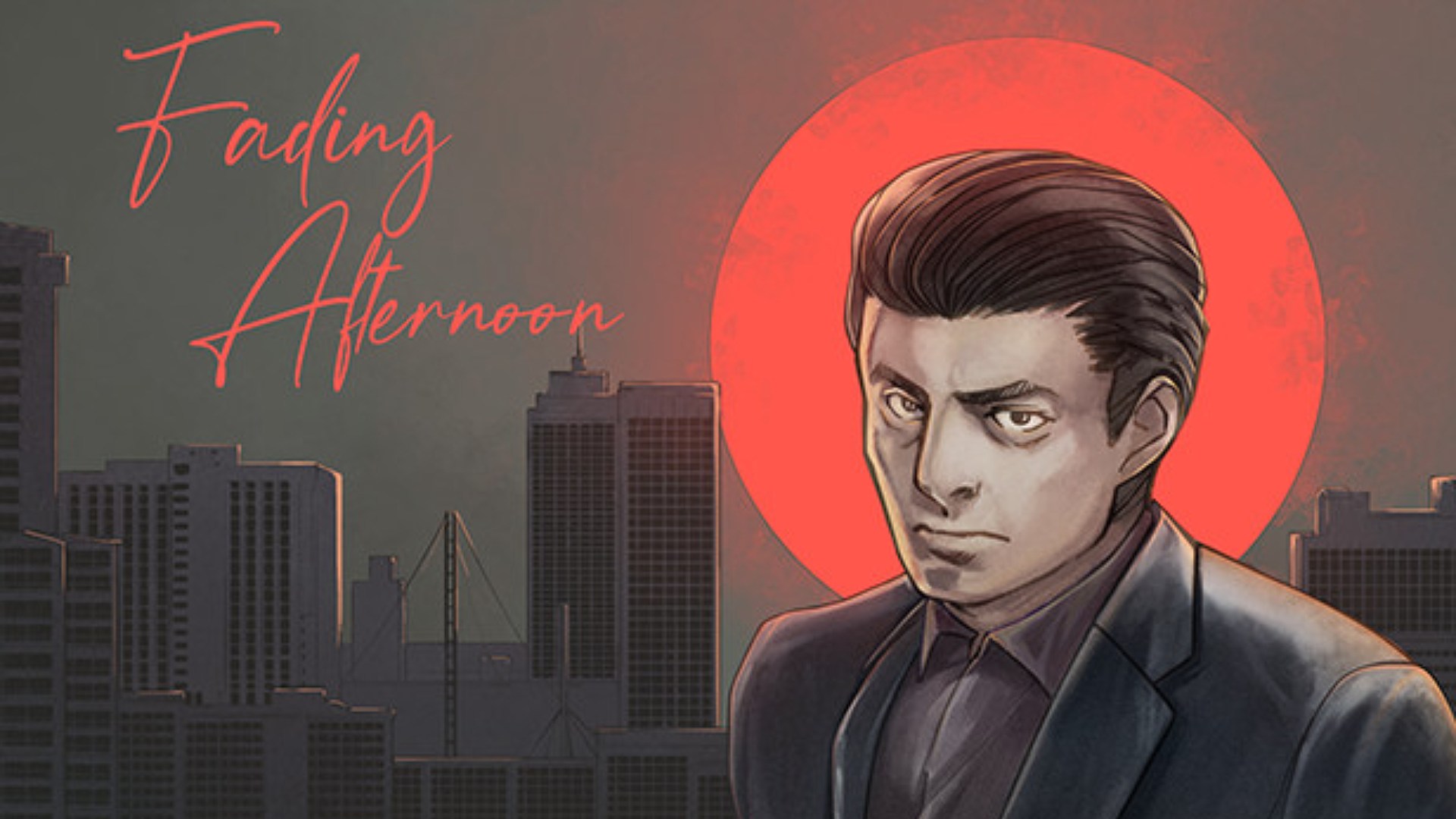Fading Afternoon is the latest title from legendary developer Yeo that rather successfully combines the best elements from his previous games to create something wholly unique. It is a startling achievement, one that captures the mellow, existential, and hyper-violent cinematic flare of a Kitano movie in a way no other work of art has managed. While not without its flaws, Fading Afternoon not only cements Yeo’s legacy as a truly unique creative but also offers fans an unequivocally gorgeous experience full of his trademark philosophical discussions, stylish combat, and delightful dedication to detail that proves to be one of my favorite games of the year if not all time.
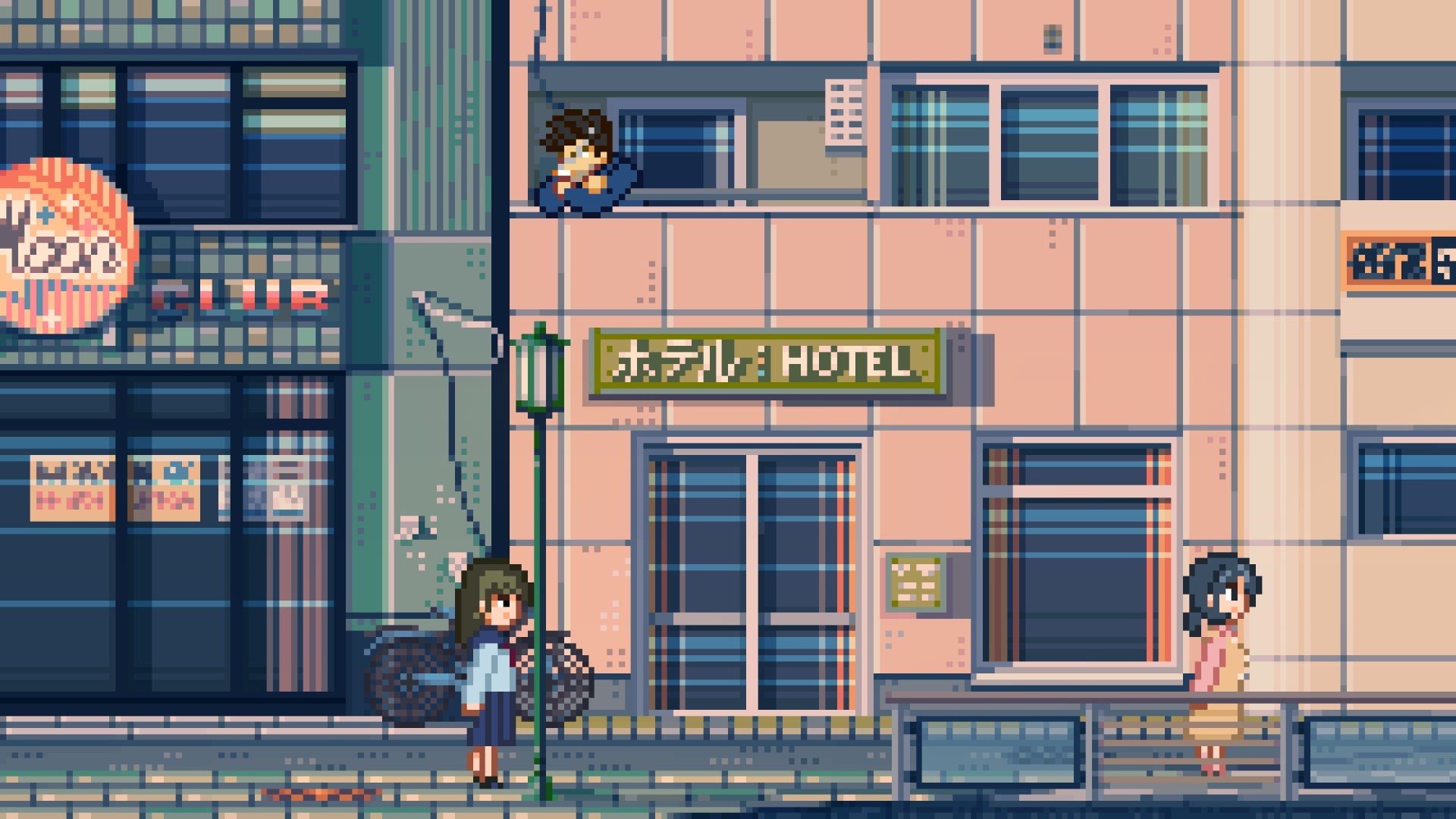
“It is Fading Afternoon’s ability to offer moments of somber retrospection that elevates it beyond a simple beat ’em up.”
Fading Afternoon puts you in the role of Seiji Maruyama, an aging Yakuza released from prison and back into a world of crime. Of course, if you’ve played any of Yeo’s other games before, you will know that the story explores so much more than that. It’s a game of existential philosophical discussions, one in which you can go from a bloodbath in a bullet train to contemplating your choices as you waste away the day in a nearby sleepy countryside town waiting to hear whether or not you need to execute someone.
Maruyama is a compelling character, one of moral integrity shoved knee-deep into a world that he is struggling to be a part of. His age is reflected not just in the game’s masterful script, which deftly deals with topics of loss, grief, and the ineffable impermanence of time, but also in gameplay. It’s a refreshing perspective, one that gets a significant amount of play and never feels wasted.
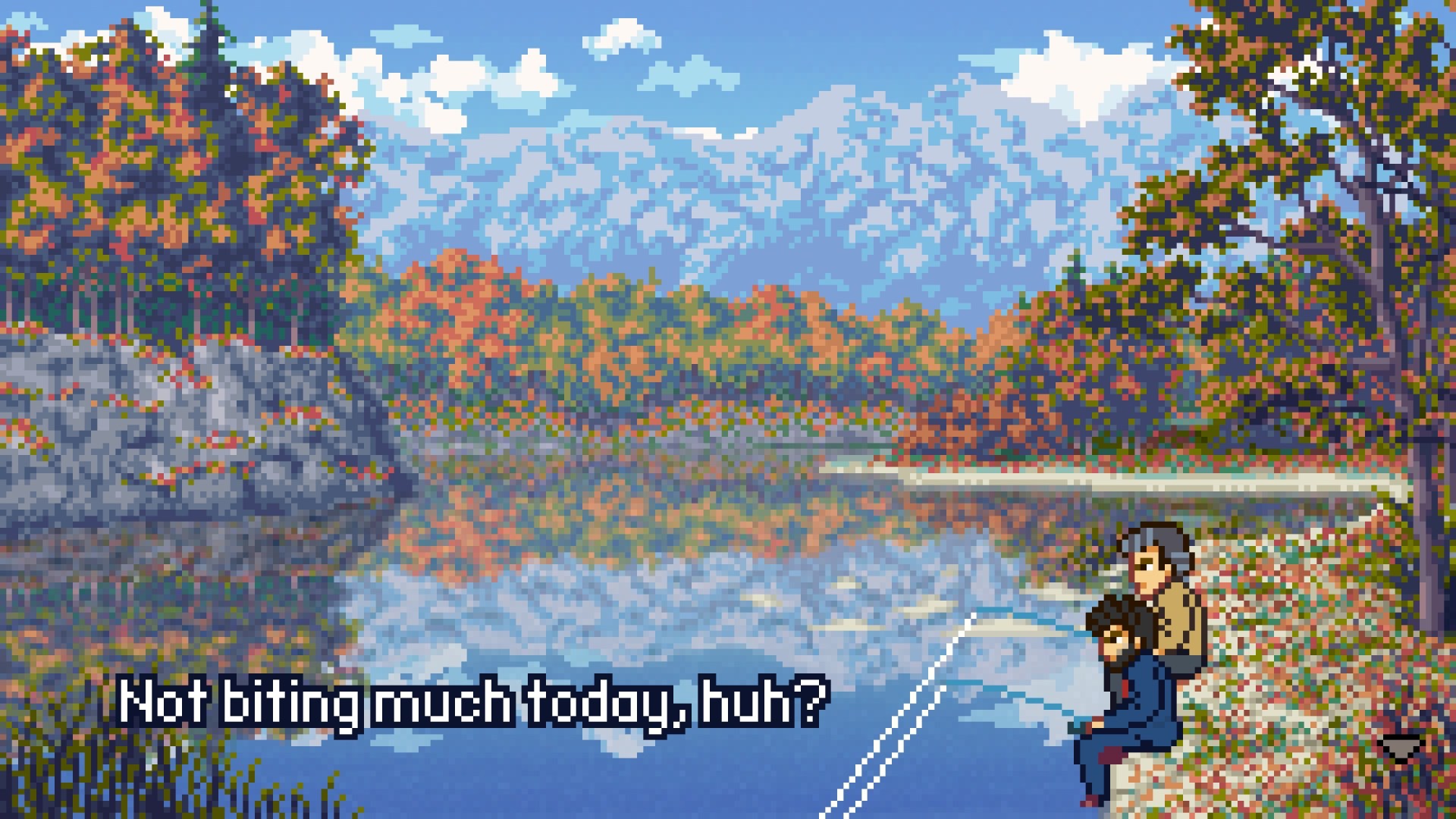
However, it is its ability to offer moments of somber retrospection that elevates it beyond a simple beat ’em up. Fading Afternoon’s dedication to fleshing out its deeply flawed yet incredibly endearing cast of characters, all while weaving them through an increasingly complex melodrama, is unceasingly impressive. It reminds me of the brilliance of Takeshi Kitano, especially his excellent movie Brother, while still establishing its own nuances and ingenuities, creating something engrossingly refreshing.
“These branching story paths not only encourage replayability but also impress upon you the importance of freedom within Fading Afternoon.”
Perhaps the most impressive aspect of Fading Afternoon’s story, at least on a purely technical level, is its seemingly endlessly interconnected web of branching paths the player can explore. This isn’t a game where your dialogue choices will inherently alter the flow of the game, but rather your in-game decisions, who you speak to, which locations you visit, and what orders you opt to obey.
For example, one mission sees your boss, Azuma, order you to execute a member of one of the other families. You’re told the location of this person and at what time they’ll be available, but you don’t have to do it if you don’t want to. Whether you choose to or not will fundamentally alter the story, with killing the guy resulting in an entirely different story route than opting not to do the mission entirely.
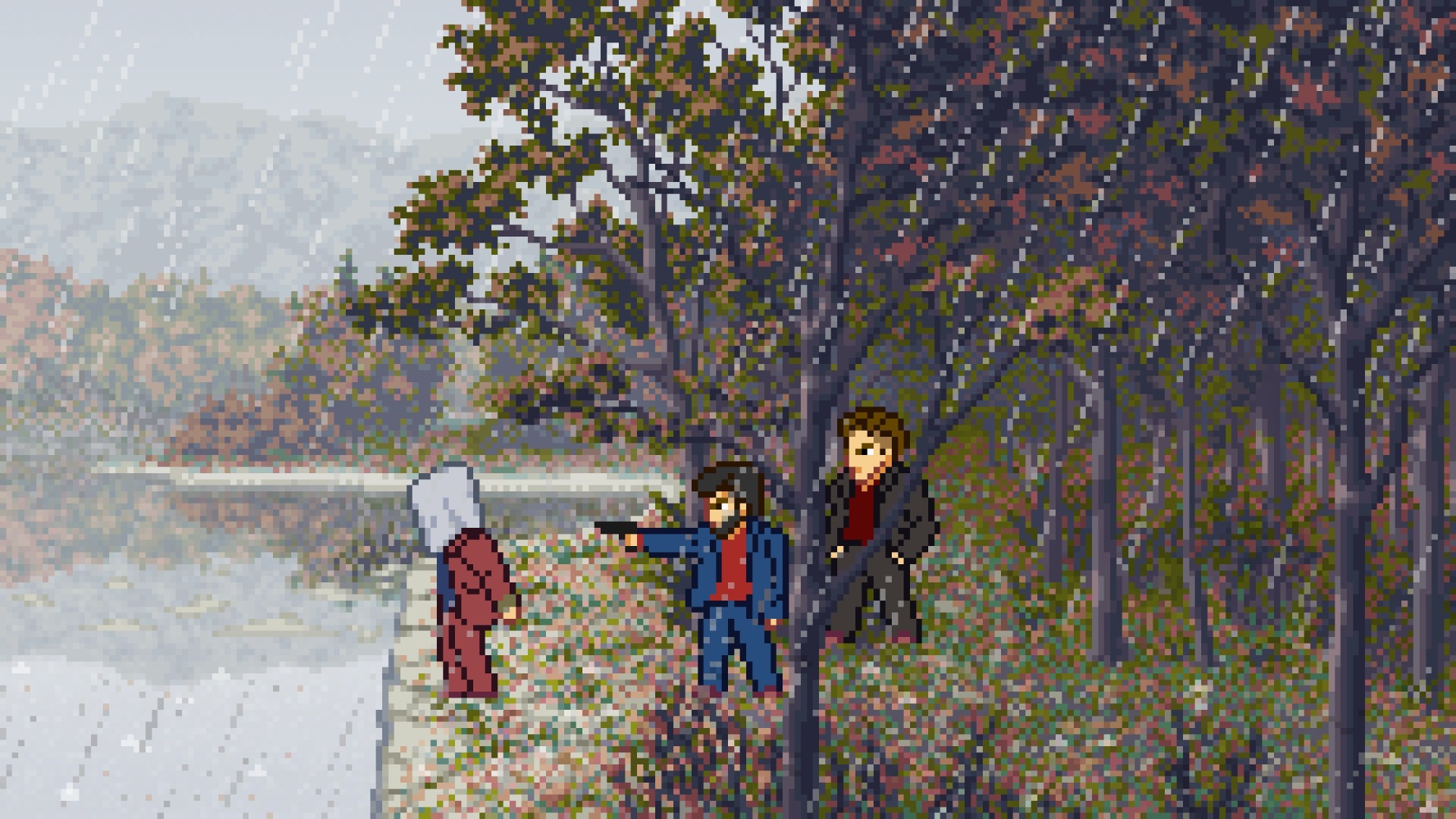
These branching story paths not only encourage replayability but also impress upon you the importance of freedom within Fading Afternoon, a pervading theme not just in its story but also in its gameplay. It is this dogmatic dedication to player choice that creates the game’s phenomenal sense of immersion, one that heightens the tension and emotional stakes of the story while allowing you to completely engross yourself in the game’s world.
“There’s a deep complexity to combat once you get the hang of it, a rich collection of combos and moves that coalesce to create an Oldboy-esque experience.”
Outside of the story, you’ll be taking on rival families for territory. The world map is split into different regions, with each one offering a unique shop, key location, or mini-game that is protected by one of the various Yakuza families. To take it, you’ll need to beat up the goons there and then execute the underling in charge.
Combat is so intensely enjoyable in Fading Afternoon, owing largely to the impressive sense of feedback heightened by the crunchy audio design. There’s a deep complexity to combat once you get the hang of it, a rich collection of combos and moves that coalesce to create an Oldboy-esque experience. It is further elevated by Seiji’s fragility, illness, and age, which limits his health at the beginning of the game, turning every encounter into a nail-bitingly brutal back-and-forth between you and your enemy that feels constantly life-threatening.
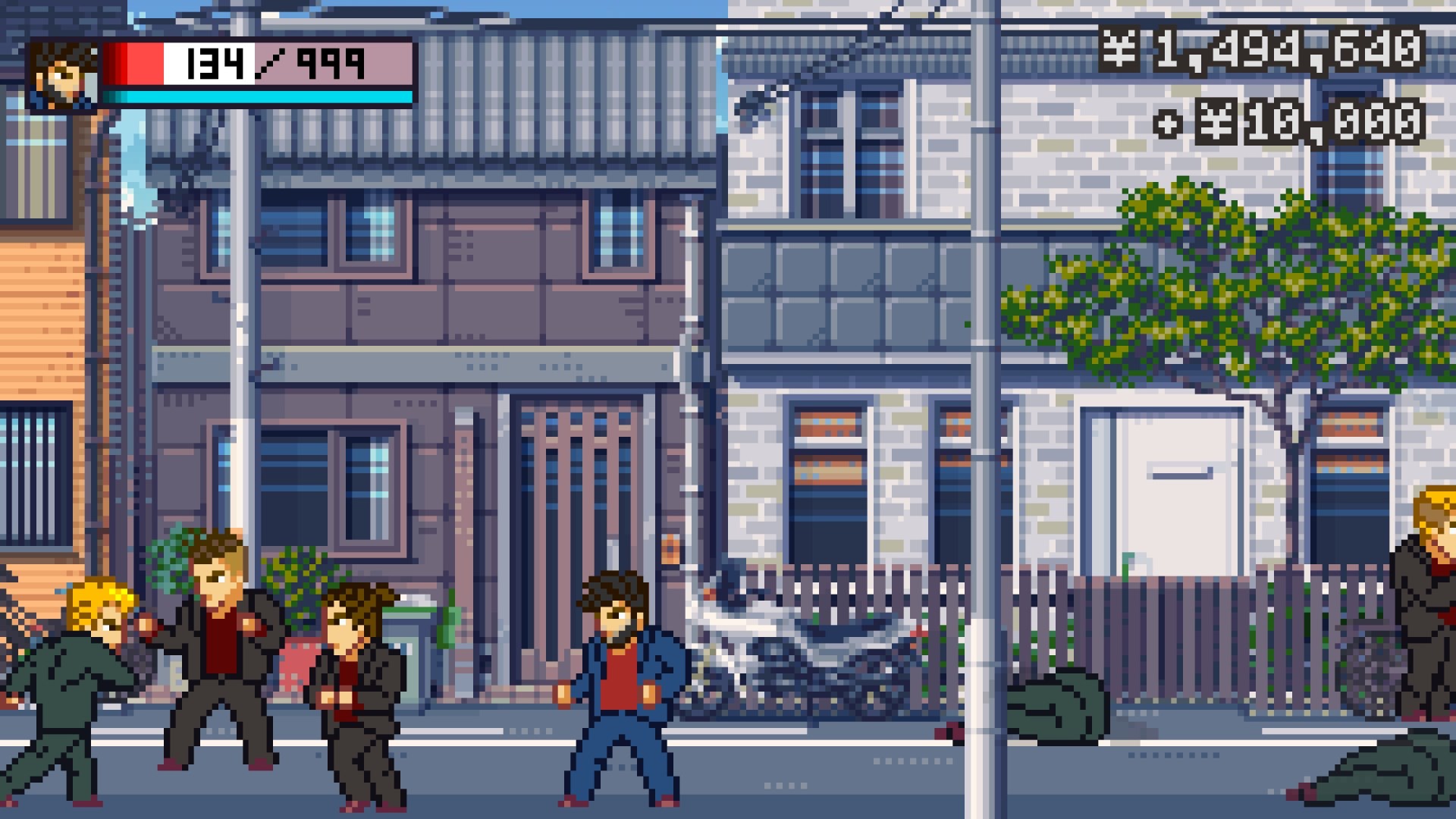
Enemy variety also keeps combat feeling fresh, with each location sporting unique enemy types. Each encounter provides its own challenge, from katana-wielding goons that you need to perfectly time your attack to disarm to bottle-throwing nuisances that need to be dodged. It creates an almost balletic rhythm to combat, a delicate balancing act that requires your utmost attention at all times. The strategic nuances to combat in Fading Afternoon is one of the game’s greatest highlights, as it constantly challenges you while always maintaining a level of fairness thanks to its intuitive and simple controls.
“Combat in Fading Afternoon is enriched by the way it ties directly into narrative progression.”
There is also a gorgeous cinematic quality to combat in Fading Afternoon, aided largely by the complementary soundtrack and fluid animations. Each punch and kick has been masterfully and meticulously crafted to draw you into every blow, and the smoky, snappy jazz that explodes the moment you leap into action intensifies every encounter.
However, perhaps the most cinematic aspect of combat is the executions, which require you to locate a character in one of two possible locations and take them down. Each one sees you stroll in, pull out your pistol, and shoot your target in the back of the head before Anitek’s Dampness begins playing in the background. It’s an unequivocally enjoyable experience and about as close as we’ll get to translating the hyper-violence of Japanese crime films into video game format.
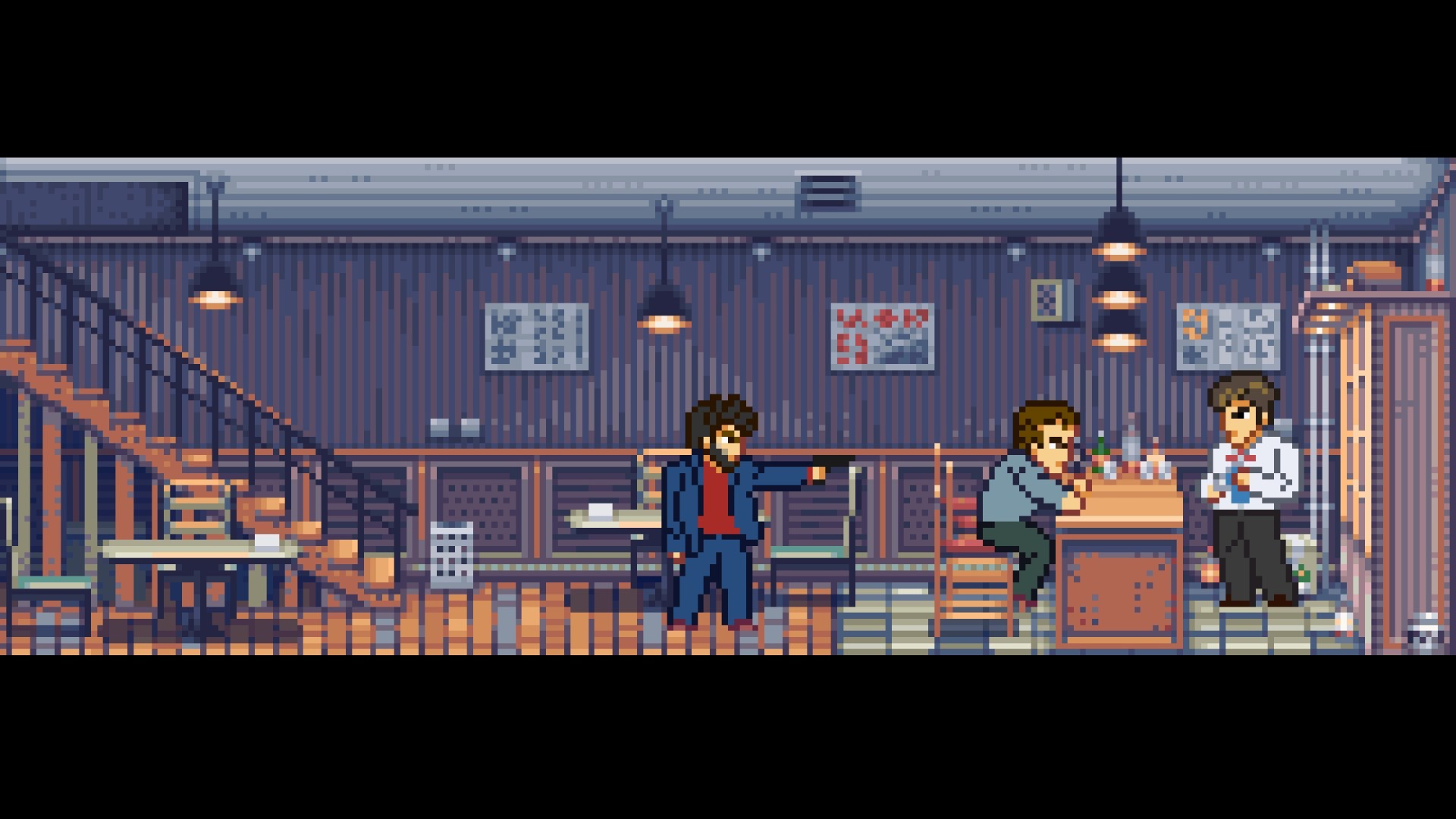
Furthermore, combat is enriched by the way it ties directly into story progression. The more territory you take and people you assassinate, the more narrative-driven sequences you’ll get. It makes what could have resulted in a repetitious task feel consistently rewarding, not least because of the phenomenal sense of cinematic flair inherently baked into the game’s combat but also because it directly leads into another brilliant aspect of the game you’re immersed in. The gameplay loop effortlessly and deftly balances combat and narrative to create an endlessly engrossing experience.
“Fading Afternoon rivals even Yakuza for having one of the most impressive worlds in video game history.
Fading Afternoon is not just a game about combat and taking down rival families. In fact, it is as much a life sim as it is a bloody brawl, offering a plethora of potential ways to experience life through Maruyama’s eyes. Much like the Friends of Ringo Ishikawa, which offered a very immersive experience as a Japanese student, Fading Afternoon attempts to ground its protagonist in the mundanity and pleasures of everyday life.
You’ll need to make enough money to stay in your hotel or risk sleeping in your car; you can get a girlfriend, play pool at the local bar, get drunk and pass out on the street, visit the countryside when the city becomes too oppressive, go fishing, or even just while away the hours smoking and walking the city streets. As much as I love Fading Afternoon’s combat and story, roleplaying as Maruyama was the best aspect of the game for me. I derived so much joy from simply experiencing every little detail and feature Yeo so lovingly implemented to make life in this blood-soaked world feel so peaceful.
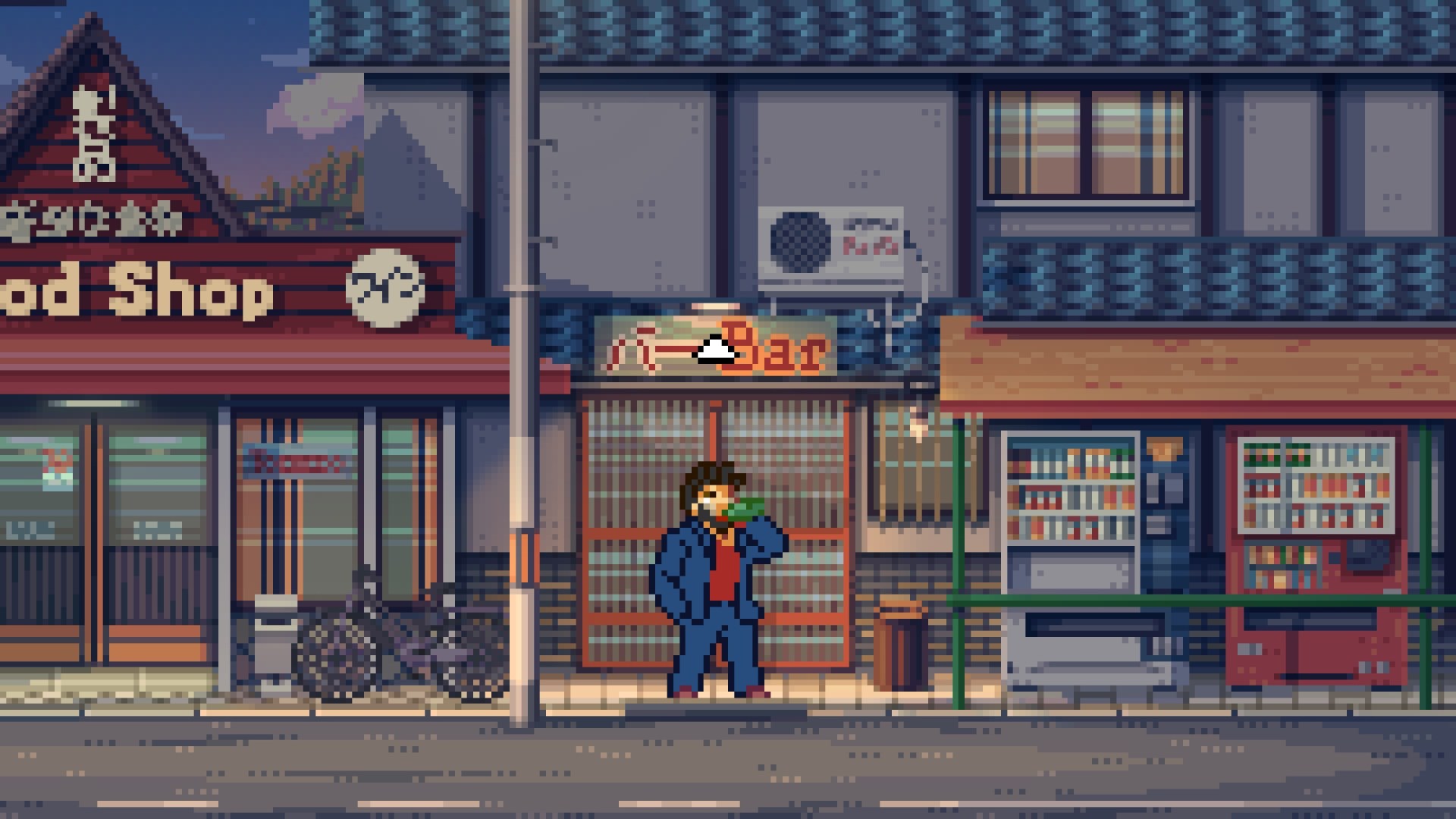
I found myself watching the world go by as I rode the train, trying to beat my high score in the batting cages, sitting at the bar in the karaoke club, or even hanging out near the sandwich shop, soaking in the atmosphere. It’s a mesmerizing experience, one that could easily see my hours skyrocket and is the biggest reason for wanting to return. Yeo has really made something special here, a truly alive and immersive world full of so many interactions, mini-games, sights, and sounds. I’d argue it even rivals Yakuza for being one of the most impressive worlds in video game history.
“The lack of handholding not only allows for greater replayability, but it also enables you to completely embody Maruyama himself.”
Unfortunately, there are some issues with Fading Afternoon, namely with its accessibility. For example, the English translation, while mostly fantastic, has its issues. Abbreviated spellings such as “tho” are used inconsistently, making it unclear whether it is an intentional stylistic choice or not. Additionally, some sentences don’t quite make sense, although it’s hard to remember an example that made a particularly detrimental impact on the story. For the most part, much like with Yeo’s previous games, the very minor issues with the game’s script can be easily overlooked, although warrant mentioning for those who are easily bothered by it.
Perhaps more glaringly, however, is the lack of hand-holding. Fading Afternoon rarely tells you what you’re supposed to do, instead relying on your inquisitive nature to visit its various locales and try out its various mechanics. For example, if you don’t ever start a fight, the story will not progress. You may also miss out on certain features or even entire story paths if you fail to visit locations in time.
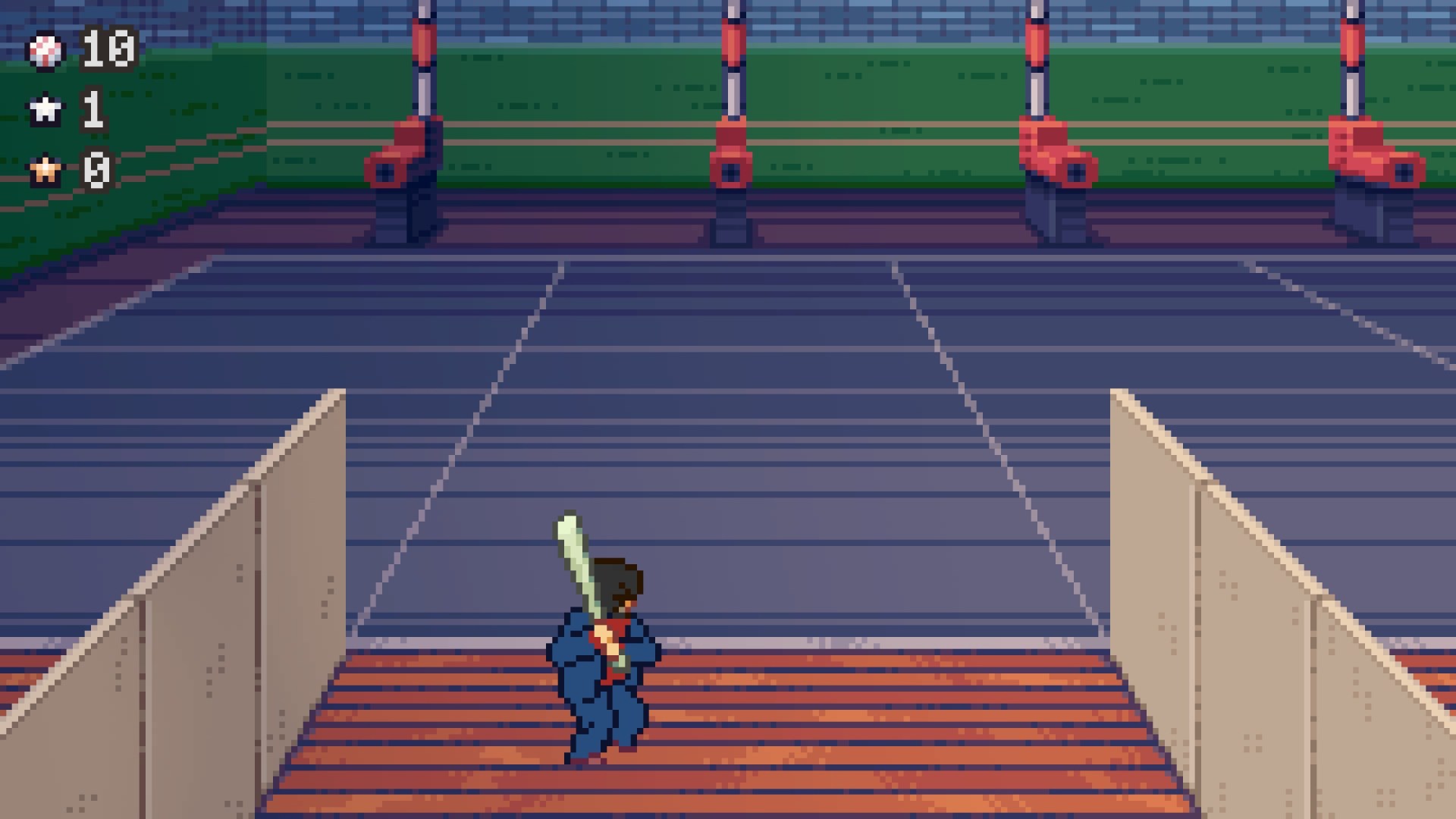
However, and I cannot stress this enough, this is entirely the point and is, in my opinion, what makes Fading Afternoon so great. The opening section of the game is intentionally ambiguous, leading you to make your own decisions and instigate the violence on your own terms instead of pigeon-holing you down one path. Additionally, the lack of handholding not only allows for greater replayability, owing to the fact that any missed storylines can then be experienced in a second playthrough, but it also enables you to completely embody Maruyama himself. Nevertheless, I appreciate that some players may have an issue with the perceived lack of direction.
“Every location feels genuinely alive thanks to the combination of phenomenal backgrounds and lively characters.”
One aspect of Fading Afternoon that I suspect most players will unilaterally adore is the art direction and intricate pixel art by Artem “Wedmak2” Belov and Ueda M. It is clear that the Fading Afternoon team is very proud of its environments, as each one realistically sprawls for what feels like miles, featuring countless minute details that coalesce to create an intoxicatingly immersive world unlike anything I’ve ever seen before. There were many moments in which I’d enter yet another of the game’s plethora of extensive interiors, only to find myself utterly astounded by the masterful level of craftsmanship and detail on display.
Ueda M.’s amazing character work also helps populate this gorgeous world, making each passerby pop with personality. Every location, whether it’s the local restaurant with its doting couples or playground filled with gleeful children, feels alive thanks to the combination of phenomenal backgrounds and lively characters. All of this is further heightened by the game’s dynamic lighting, which fills every scene with a gorgeous intensity. Watching the pink hues of the sunset slowly rolling into night as lights flood the nearby bridge with a gentle orange glow simply never got old.
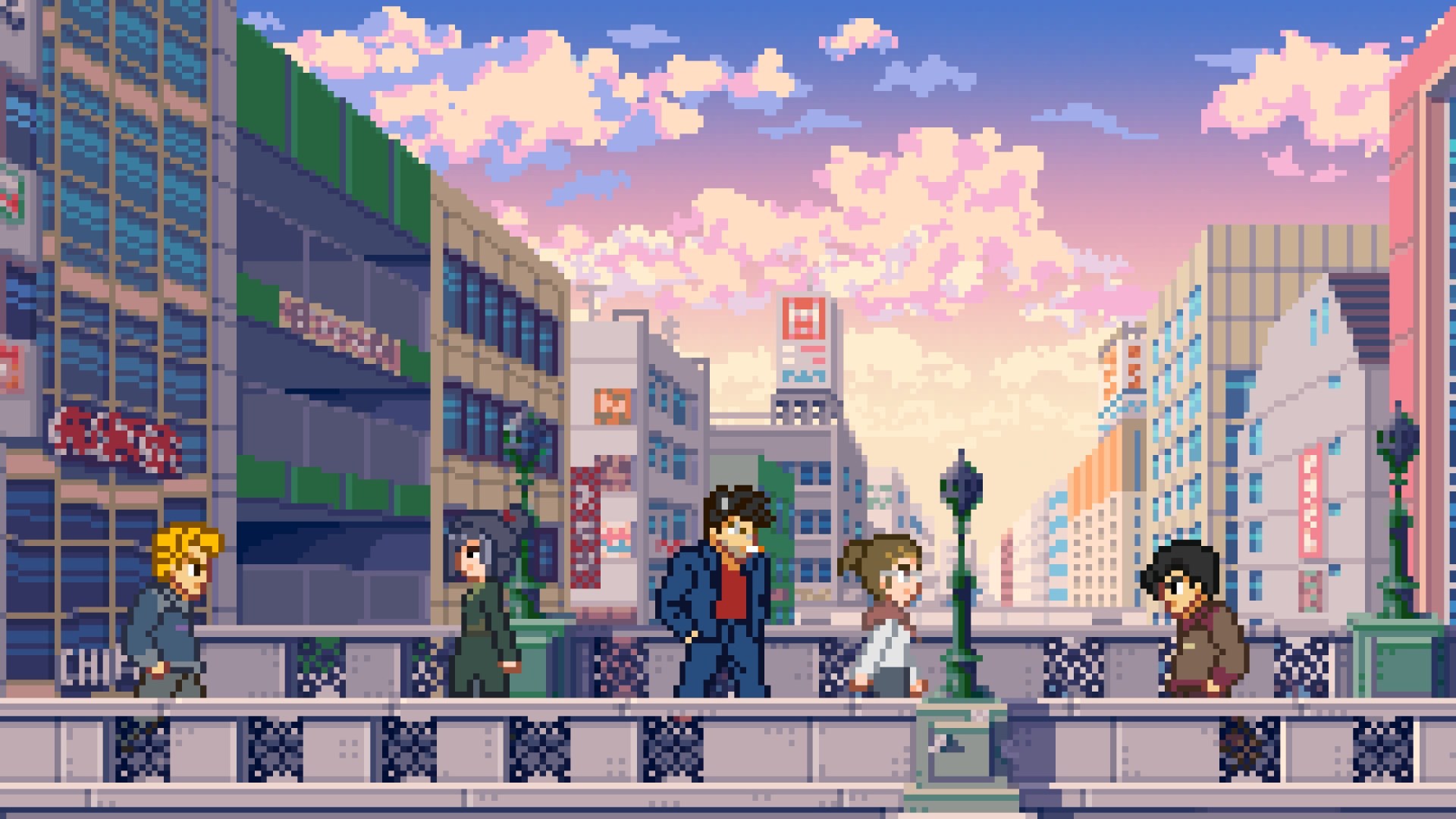
Additionally, the inspired choice of music for Fading Afternoon complements each aspect of the game. From the moody instrumentals that play as you explore each area to the enchanting 80s J-Pop that enraptures its audience, the score in Fading Afternoon is nothing short of perfection. It takes an incredibly keen eye and a great understanding of the genre to match tracks to the game’s mood, and Yeo has done that excellently here.
“I can unambiguously state that Fading Afternoon is one of the best games I have ever had the pleasure of playing, and I simply cannot recommend it enough.”
Fading Afternoon is a fantastic indie experience that not only offers a truly AAA experience but is a remarkable achievement from Yeo and his team. Its varied ambitions, from fluid combat that feels as weighty as it does nuanced, a multi-layered narrative with branching story paths and compelling characters, and in-depth life-sim elements that help flesh out its gorgeous pixel art world, have all come to fruition in one of the most content-rich games I’ve played in quite some time.
For the low price of $19.99, you are getting an immersive roleplaying experience that manages to translate the very best elements of Japanese crime cinema into a truly magnificent game. I have adored Yeo’s work for quite some time and had frankly incredibly high expectations for Fading Afternoon. But after having sunk a large amount of time into this wonderful work of art, I can unambiguously state that it is one of the best games I have ever had the pleasure of playing, and I simply cannot recommend it enough.
*Disclaimer: Reviewed on PC; code was provided by developer.


